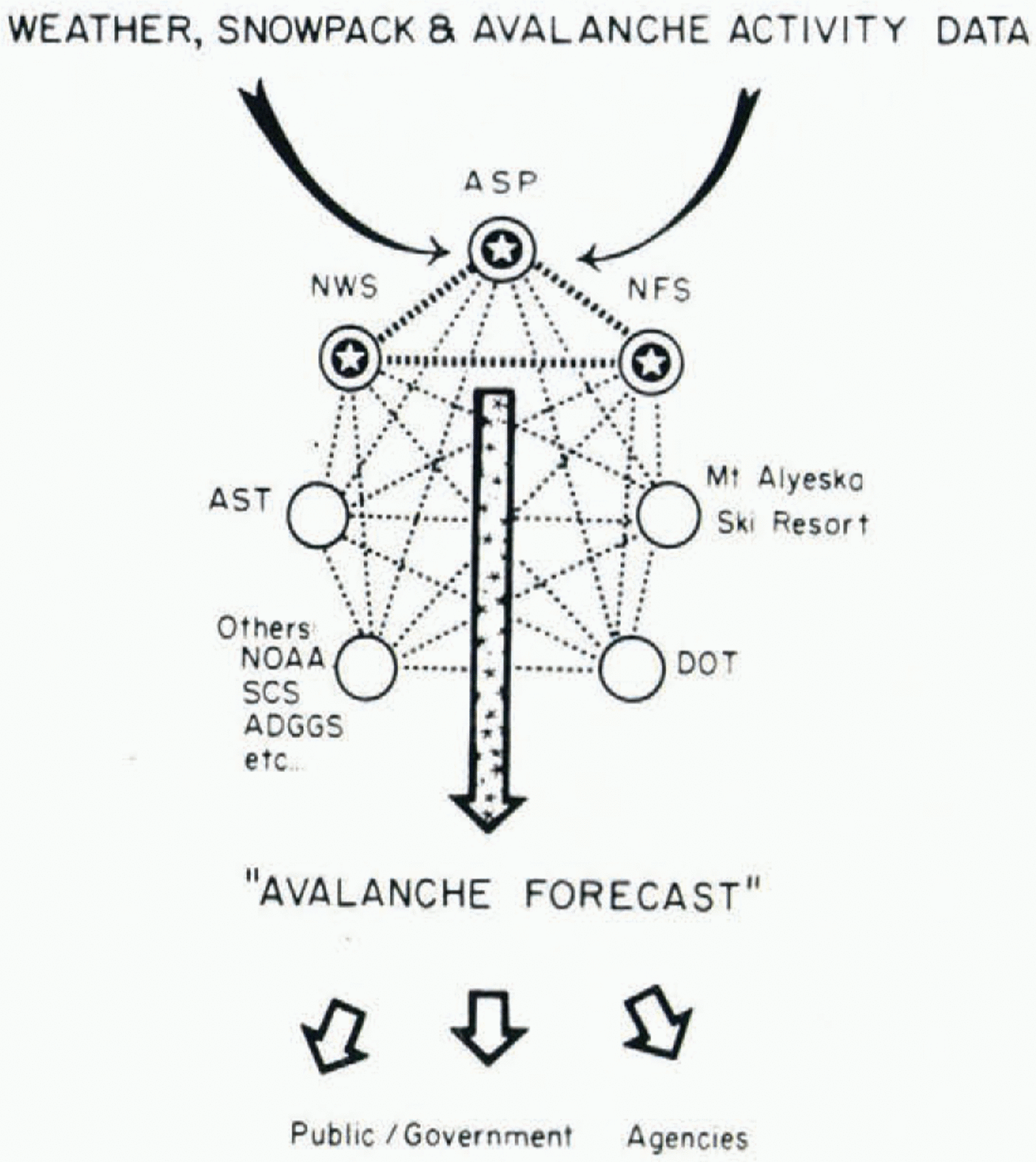The sagas of Alaskan winter outdoor activities contain increasing accounts of sudden deaths from snow avalanches. There are seemingly several reasons for this rising mortality rate. More leisure time is available, and winter mountain sports are drastically expanding from the urbanized area of south-central Alaska.
Newcomers to Alaska are often completely unfamiliar with the Alaskan mountain environment. Improved outdoor equipment and expanded motorization have increased the scope and use of a limited road system. The spectacular mountainous regions of south-central Alaska arc rapidly becoming more accessible to the average weekender.
Because of this explosion in winter sports, public recreation areas are faced with a significant increase in use by outdoor recreationists of limited knowledge and ability. Local, state, and federal agencies are finding that they must notify and “educate” the mountain visitor about the snow-avaianche pheno-menon. Outdoor clubs, ski-tour leaders, and skiing area operators must also take on the additional responsibility of informing the casual visitor of the inherent dangers in the mountains. Thus, avalanche warning and public education have acquired a new and very important function in Alaska.
Since 1971, 43 people are known to have been caught in avalanches—five died within the popularly used Chugach State Park. The western boundary of this park borders the city of Anchorage in which half of the State’ s population resides. Elsewhere in Alaska, avalanches have claimed more than 100 people since 1898, when 67 lost their lives in the famous Chilkoot Pass. The most reeent tragedy near Anchorage occurred in the Chugach National Forest in January 1978 (Table 1) when four ski mountaineers lost their lives to an avalanche while skiing in the Turnagain Pass Winter Recreation Area. A fifth person was caught but escaped.
The Seward Highway, which runs between Anchorage and Seward, to the south, is closed intermittently by snowslides almost every year. As a result, the Alaska Department of Transportation is becoming more involved in avalanche control and snowslide removal. Snow removal by local, state, and federal agencies is constantly required to keep roads, parking areas, and facilities open throughout the seven winter months.
Table I. Documented avalanche fatalities in Alaska* (1898 to present)

Most of the mountainous areas in Alaska, because of their latitude, closeness to large bodies of water, of large-scale orographic weather processes, are susceptible to major avalanche activity. The sheer quantity and different types of new snow, caused by abrupt and extensive altitude changes over relatively short distances, makes south-central Alaska extremely liable to major avalanche occurrences. There are thousands of snow avalanches each year in this region—and an increasing number of outdoor users are unfamiliar with this phenomenon and how to recognize its presence and danger.
Some efforts toward establishing a south-central Alaska Avalanche Warning System have been initiated by state and federal agencies. An informal cooperative system of categorizing avalanche hazards and issuing avalanche bulletins currently exists between the Alaska Slate Division of Parks (ASP), the National Forest Service (NFS), and the National Weather Service (NWS) (Fig. 1). Long- range plans could expand the cooperative state-federal avalanche-warning efforts of south-central Alaska to include more active and direct participation of Alaska Department of Transportation (DOT), Alaska State Troopers (AST), U.S. Soil Conservation Service (SCS), National Oceanic and Atmospheric Administration (NOAA), ski-area operators, and others.

Fig. 1. Informal avalanche-warning system for south-central Alaska.
Joint public announcements are currently made through newspaper, radio, and television during times of high danger. Additionally, a 24-hour avalanche-information telephone number provides the public with up-to-date snow-hazard reports for local mountainous areas. Specialized avalanche forecasts and snow-pack information in selected areas are also available from the local NFS Snow Ranger or ASP Avalanche Ranger. Expansion of current weather sites and the integration of a snow-monitoring network would enahle forecasters to make relatively consistent, reliable, and creditable avalanche warnings for south-central Alaska.
Prior to 1975 the NFS and the National Ski Patrol were the primary disseminators of avalanche information in south-central Alaska. Since then, ASP has taken a leading role in avalanche education within the Anchorage area by presenting numerous training seminars and classes to area residents.
During the winters of 1976—78, over 4000 man-hours were used to present avalanche education through 42 separate ASP programs. Also, half-hour television programs were presented. Additionally, avalanche schools represented by local rescue groups and outdoor educators have helped to increase the overall avalanche awareness of the Anchorage community.
Avalanche education aimed at key target groups should be geared toward increasing this basic level of awareness into a good working knowledge of the avalanche phenomenon. The Anchorage Rescue Council, in cooperation with state and federal agencies in Alaska, sponsors a comprehensive 3-day avalanche workshop session in Anchorage each fall.
Future aims in reducing snow-avalanche accidents and fatalities are a three-fold effort: (a) continue current cooperative efforts between state and federal agencies in south-central Alaska to establish a good foundation For a reliable avalanche warning system and public education program, (b) formalize the avalanche-warning system and expand the weather and snow-pack monitoring network, and (c) conduct and increase educational programs in avalanche awareness and safe winter recreational use of the mountains.






